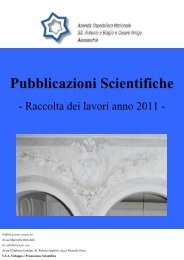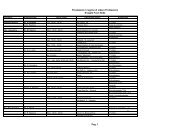Working Paper of Public Health Volume 2012 - Azienda Ospedaliera ...
Working Paper of Public Health Volume 2012 - Azienda Ospedaliera ...
Working Paper of Public Health Volume 2012 - Azienda Ospedaliera ...
You also want an ePaper? Increase the reach of your titles
YUMPU automatically turns print PDFs into web optimized ePapers that Google loves.
<strong>Azienda</strong> <strong>Ospedaliera</strong> Nazionale“SS. Antonio e Biagio e Cesare Arrigo”<strong>Working</strong> <strong>Paper</strong> <strong>of</strong> <strong>Public</strong> <strong>Health</strong>nr. 3/<strong>2012</strong>came from Latin America, being Venezuela, Panama and Brazil the lowest. We use thisvariable as proxy for information, since it is one <strong>of</strong> the most effective ways to spreadinformation about donations. We expect to see a positive correlation between them.As Anbarci and Caglayan (2005) point out in their paper, institutional aspects seem tohave some effect in organ donation, such as the rule <strong>of</strong> law and religious belief. Based onthis, we add to our model dummies for ‘catholic country’ and ‘common law’. From oursample, 56% <strong>of</strong> countries are catholic and a quarter has common law as the legal system.Religious belief can affect the organ donation since it influences people’s attitudestoward the way <strong>of</strong> life. As cadaveric donation is a topic that involves spiritual beliefs forthe integrity <strong>of</strong> the human being, religion can play an important role in this subject. Thereare two main legal systems in place in the sample analyzed in this paper: common lawand civil law. Based on this, these features can affect the way people feel concernedabout donation.3.2 Quantile Regression for Panel Data ApproachBaltagi (2001) points out some <strong>of</strong> the main benefits <strong>of</strong> using panel data: i) controls forindividual heterogeneity; ii) more informative data (more variability) can be analyzed; iii)less collinearity among covariates; and iv) it is a good way to investigate dynamics <strong>of</strong>adjustment. However, panel data is a method based on the conditional mean. That is, itassumes that covariates affect only the location <strong>of</strong> the conditional distribution <strong>of</strong> thedependent variable, and not its scale or any other aspect <strong>of</strong> its distributional shape.Koenker and Basset (1978) developed a method called quantile regression (QR) thatdeals better with the conditional mean problem, since it extends the regression model toconditional quantiles <strong>of</strong> the response variable. This means that more information can beobtained, particularly when the estimated coefficients depend on each quantile, i.e. whenthere are asymmetric effects throughout the conditional distribution <strong>of</strong> the responsevariable. Other advantages in using QR are: i) it does not make any distributionalassumption about the error term; ii) it is robust to outliers; and iii) it uses the entire datato estimate each quantile coefficient. The main limitation associated with QR is that it is a11



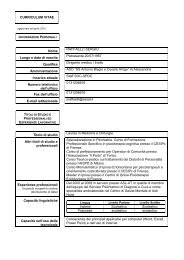
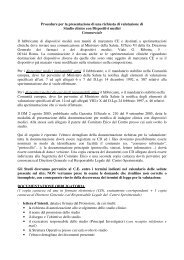

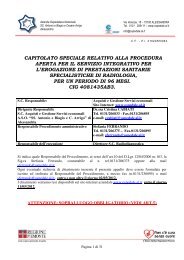
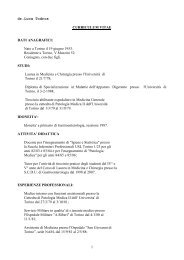
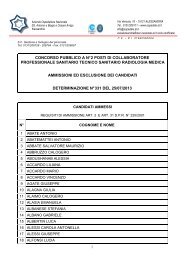

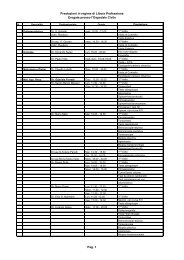


![[torino - 1] lastampa/urc/01 ... 26/10/09 - Azienda ...](https://img.yumpu.com/44058002/1/190x32/torino-1-lastampa-urc-01-26-10-09-azienda-.jpg?quality=85)

